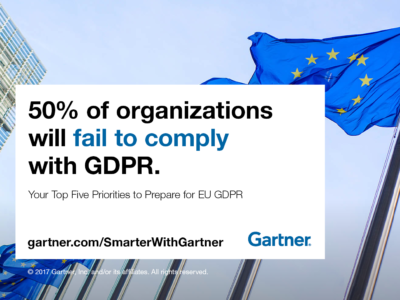Follow these seven steps to uncover opportunities to monetize your information assets.
Monetizing information today is no longer just the purview of data brokers, and it can involve a variety of methods beyond simply licensing it.
Take real estate websites. Users drive 90 percent of the activity by clicking on photos. However, most of the photos and objects in them are not tagged, leaving the sites with no way to determine visitors’ interests.
One U.S. real estate information provider solved this problem by building and training a 1-billion-node neural network to learn what was in each photograph. This made it possible to learn which home features are viewed by whom, how often and for how long. Shedding this light on “dark data” gave the company enhanced marketability and a new revenue stream from its information assets. Now users can search, for example, “Pictures of wine cellars in houses in the Hamptons.”
What information assets can your organization monetize to gain a competitive edge?
Many information leaders increasingly grasp the idea that information adds value to their organization beyond mere operational excellence and decision making, but they have a limited view of how they can help business leaders generate value from information, according to Douglas Laney, vice president and distinguished analyst at Gartner.
This trend to perceive, use and value information as an asset is still in the early adoption phase, so now is the time to create a competitive differentiation by driving economic benefits from information by:
- Selling, bartering with or licensing it, and
- Using it to measurably reduce costs or increase revenue
Consider these seven steps to set your organization on a path toward practicing infonomics; Gartner’s term for asserting economic significance to information.
1. Create a product manager role
Give your information the same product management discipline you give other valuable assets and competencies. Organizations typically have a defined approach for managing and marketing products. Analogously, if you are considering licensing data in any form, you need someone whose job is to define and develop the market for the information asset and to productize it.
2. Inventory your assets
If you don’t know what information you have, or need, you can’t leverage it as an asset. Identify all types of data, including operational, commercial, public, social media and Internet content you can mine for new forms of value. Next, help business leaders understand the range of data available and use various technologies to refine the raw data into more marketable forms.
3. Borrow ideas from other industries
Check out what other industries are doing to jump-start your own monetization efforts. Looking beyond a single industry is increasingly important — not just to find good ideas, but also as a an early warning about how other companies are evolving their information monetization initiatives that could encroach on your market in unexpected ways.
4. Evaluate direct and indirect methods
Indirect monetization entails using information internally to improve a process or product in a way that results in measurable outcomes, such as income growth or cost savings. Direct monetization involves a transaction. It ranges from exchanging information in return for goods and services, to incorporating data into existing or new products or services, to outright selling it (more often, actually licensing it) in one form or another.
5. Test ideas for feasibility
Put ideas to the test by asking a series of feasibility questions regarding whether your ideas are practical, marketable, scalable, legal, ethical, economical, etc.
6. Prepare the data
How are you going to gather the data, and from where? Then, what are you going to do to enhance its utility and potential economic value? Again, think of how physical production processes use raw materials to eventually create finished goods.
7. Make the market
Finally, for externalized information products, focus on the marketing aspect, starting with packaging the information product, determining how it’s going to be positioned, priced and sold, and what the terms and conditions for its use might be. This is where a dedicated information product marketing role can pay off.
Gartner clients can access the full feasibility matrix and view the steps in greater detail in Seven Steps for Monetizing Your Information Assets.
Gartner analysts will provide additional analysis and information on the outlook on BI and analytics at the Gartner Business Intelligence, Analytics & Information Management Summits taking place in Sydney, Australia, Sao Paulo, Brazil and Mumbai, India and at the Gartner Business Intelligence & Analytics Summits in London, U.K. and Grapevine, Texas. You can follow news and updates from the events on Twitter using #GartnerBI.
For more articles visit Smarter With Gartner website.










